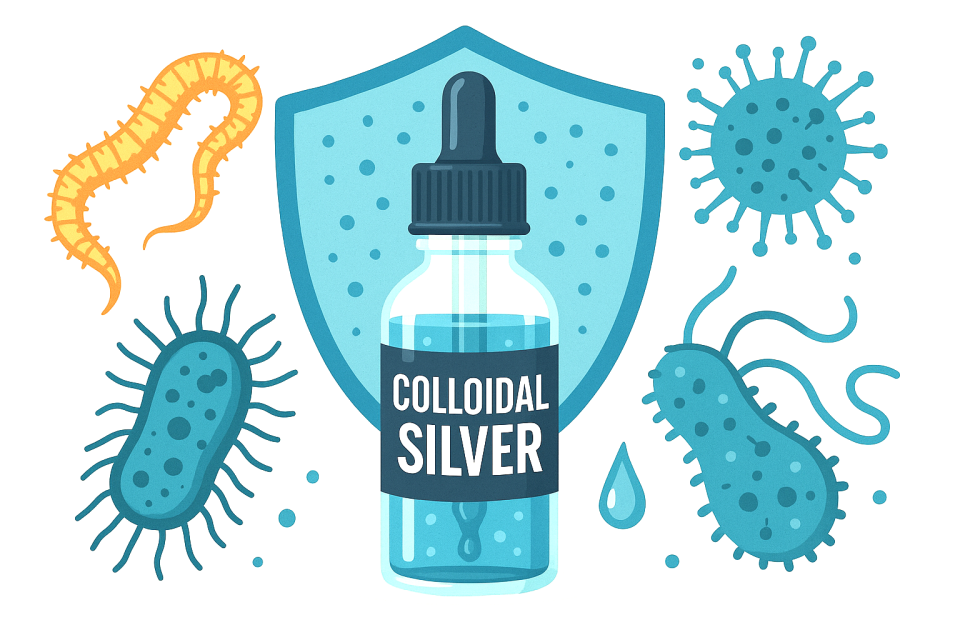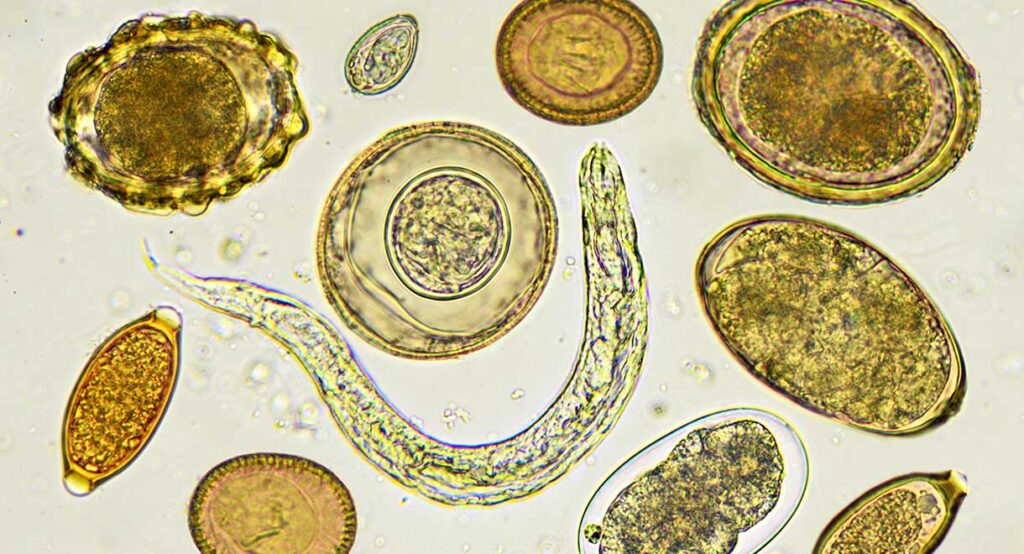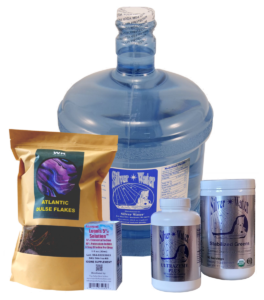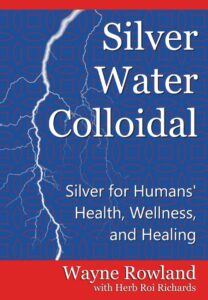When it comes to battling harmful microorganisms, few natural substances stand as tall as colloidal silver. Long before the rise of modern pharmaceuticals, colloidal silver was revered for its remarkable ability to fight infections, especially those caused by elusive parasites that evade conventional treatments.
A Parasite’s Worst Nightmare
Throughout history, parasites have silently plagued human health, living undetected in the body and robbing it of nutrients. Yet, as early as the early 20th century, scientists discovered that colloidal silver could effectively destroy these invaders. Alfred Searle, a pharmaceutical pioneer, observed over 100 years ago that colloidal silver, when taken orally or injected, destroyed parasites without harming the human host. Remarkably, he reported that it could protect lab animals from lethal doses of deadly toxins like tetanus and diphtheria.
Unlike harsh chemical antiparasitics, colloidal silver works gently but powerfully. It doesn’t poison the parasite in a way that would also harm the person carrying it. Instead, it disrupts the parasite’s ability to survive, without harming human tissues. This makes it one of the safest natural agents for tackling parasitic infections.
How Does Colloidal Silver Work?
Colloidal silver is a suspension of microscopic silver particles in water. These tiny particles are small enough to remain suspended indefinitely, creating a stable and bioavailable form of silver. In laboratory tests, silver at concentrations as low as five parts per million (ppm) has been shown to kill bacteria, fungi, viruses, and single-celled parasites in just minutes. Dr. Henry Crooks, in his book Use of Colloids in Health and Disease, famously stated, “There is no microbe known that is not killed by colloidal silver in six minutes or less, in a dilution as little as five parts per million.”
Unlike chemical antibiotics, colloidal silver doesn’t seem to target just one type of pathogen. Its broad-spectrum action makes it a versatile tool against many types of microorganisms, including parasites.
Safety and Everyday Use
One of colloidal silver’s greatest advantages is its remarkable safety profile. Despite fears circulated by some modern critics, there is no documented case of anyone dying from using colloidal silver—internally or externally. The U.S. Poison Control Center classifies it as non-toxic, and historical records indicate that it has been used safely for decades, even in newborn babies’ eyes to prevent infections.
Even in higher doses, adverse effects appear to be extremely rare. While it’s possible to consume excessive amounts of just about anything (even water, salt, or sugar), people using colloidal silver responsibly generally report only positive outcomes. Many users take one or two teaspoons of 5 ppm colloidal silver daily as a supplement to support their immune health. Some individuals have experimented with larger amounts over long periods without experiencing harm, reporting instead that they felt healthier, had fewer infections, and enjoyed better digestion.
Supporting the Immune System Naturally
Silver is a trace mineral naturally found in the environment. Just as plants and animals need minerals like iron and zinc, silver in colloidal form may play a subtle yet important role in supporting human health. It helps normalize the body’s internal environment, creating conditions that are unfriendly to harmful microbes while supporting natural balance.
Our bodies regularly encounter colloids, microscopic mineral particles suspended in water, in fruits, vegetables, and even seawater. Colloidal minerals are crucial for the health of plants, animals, and humans alike. Without them, chronic illnesses and immune dysfunctions are more likely to develop. Colloidal silver simply harnesses this principle for antimicrobial protection.
A History of Success in Medicine
Colloidal silver was not a fringe remedy in the past. By 1919, it was being widely used in hospitals, both taken by mouth and injected intravenously, with consistent success in treating infections and parasitic diseases. Before the advent of patented antibiotics, it was a staple in the physician’s toolkit.
Modern laboratory studies still echo those early findings. Microbes, whether bacteria, fungi, viruses, or parasites, remain no match for colloidal silver’s microscopic particles, which disable their essential enzymes and metabolic functions, leading to their rapid demise.
Colloidal silver as a Natural Antiparasitic
Colloidal silver stands as one of nature’s most potent defenders against parasitic infections and other microbial threats. With its remarkable safety record and broad-spectrum power, it continues to be valued by those seeking natural ways to support their health.
As with any supplement, it is wise to educate yourself thoroughly and consult with a knowledgeable healthcare practitioner before starting new health routines, especially if you are already on medication or have health concerns.
References
-
- Crooks, H. (1910). Use of Colloids in Health and Disease.
- Searle, A. (1919). The Use of Colloidal Silver in Medicine.
- U.S. Poison Control Center, “Silver: No Toxicity Rating” (1999).
- Historical medical records on colloidal silver use from the early 1900s.
- Laboratory tests on silver’s antimicrobial properties.



